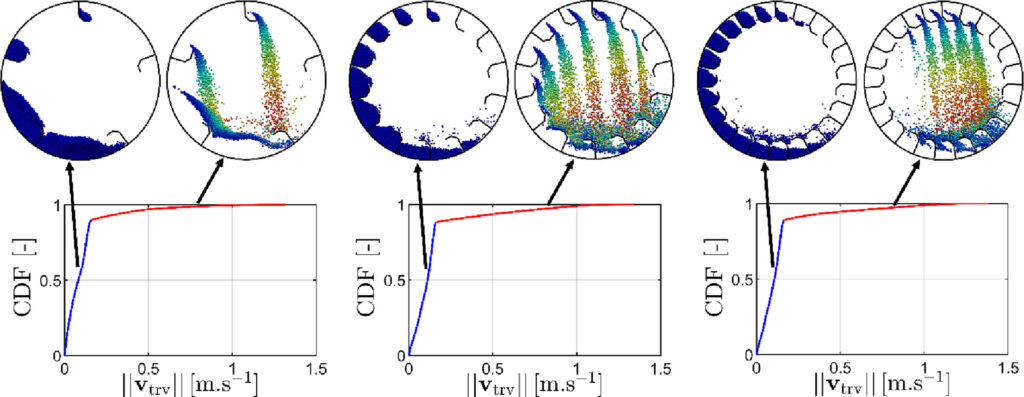Recognition of the granular airborne portion in a flighted rotary drum
This ar ticle deals with numerical simulation via Discrete Element Method (DEM) in a flighted rotary drum with a varying number of flights from 1 to 25 at a constant load of particles. The granular kinematics is studied in the three regimes: under-, design- and over-loading. It was shown that the behavior of granular material during the unloading process from the flights governs the regime transitions. The cross-sectional distribution analysis of the granular material in the different parts of the drum established the existence of two dense media (bed and flights) and one dilute medium (in the airborne portion). Since one of the criteria that affect the efficiency of heat transport between the gas and the particle media is the number of particles in the airborne phase, three recognition methods are proposed to detect the airborne portion. Based on geometry, velocity magnitude, and minimal separation distance, the comparison between them provides a basis for discussion about the relevance of each method in detecting airborne particles.
ticle deals with numerical simulation via Discrete Element Method (DEM) in a flighted rotary drum with a varying number of flights from 1 to 25 at a constant load of particles. The granular kinematics is studied in the three regimes: under-, design- and over-loading. It was shown that the behavior of granular material during the unloading process from the flights governs the regime transitions. The cross-sectional distribution analysis of the granular material in the different parts of the drum established the existence of two dense media (bed and flights) and one dilute medium (in the airborne portion). Since one of the criteria that affect the efficiency of heat transport between the gas and the particle media is the number of particles in the airborne phase, three recognition methods are proposed to detect the airborne portion. Based on geometry, velocity magnitude, and minimal separation distance, the comparison between them provides a basis for discussion about the relevance of each method in detecting airborne particles.
- M. Kozakovic, J. Havlica, L. Le Guen, S. Parez, F. Huchet, Recognition of the granular airborne portion in a flighted rotary drum, Powder Technology 425, 118565, 2023. DOI